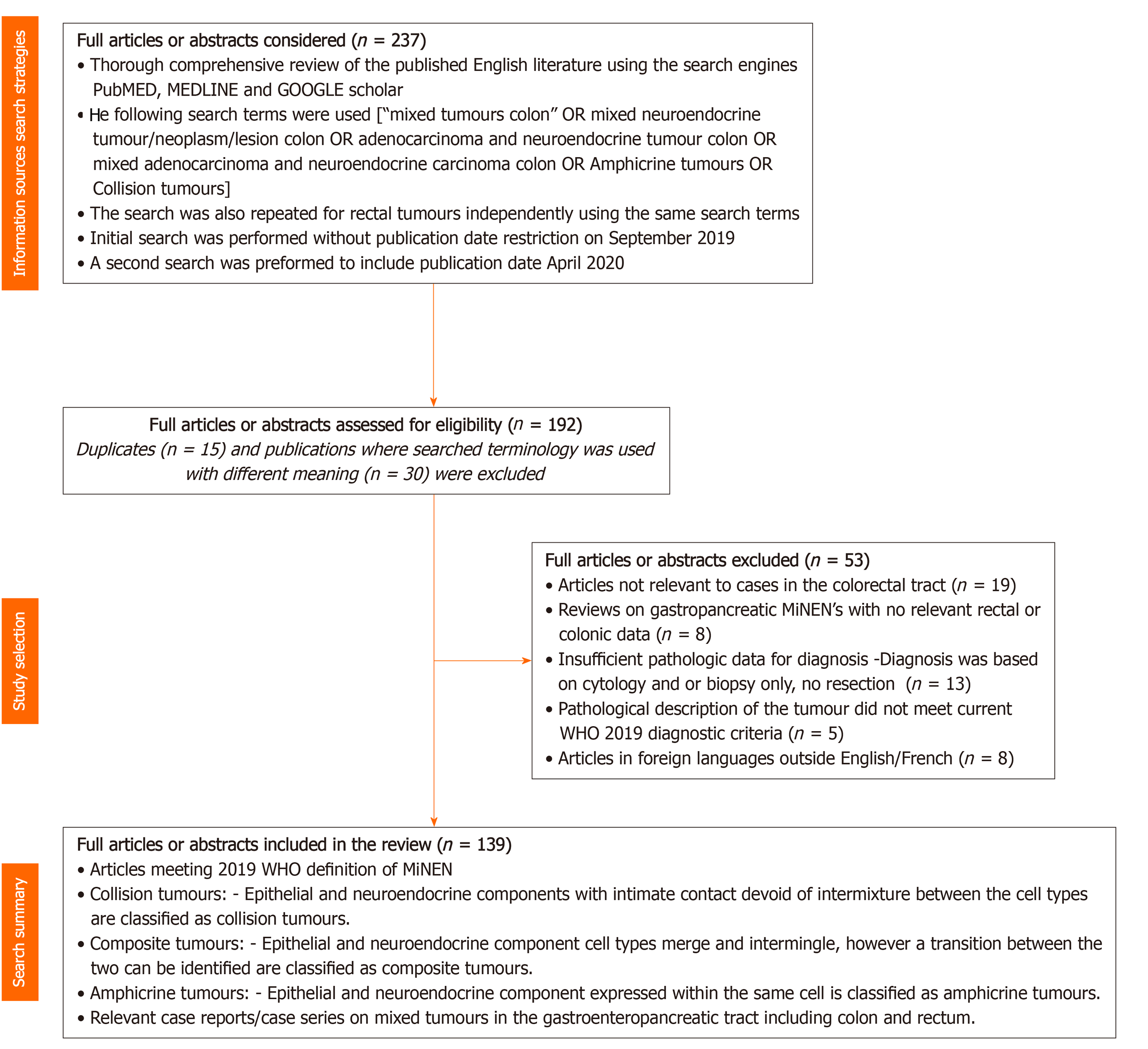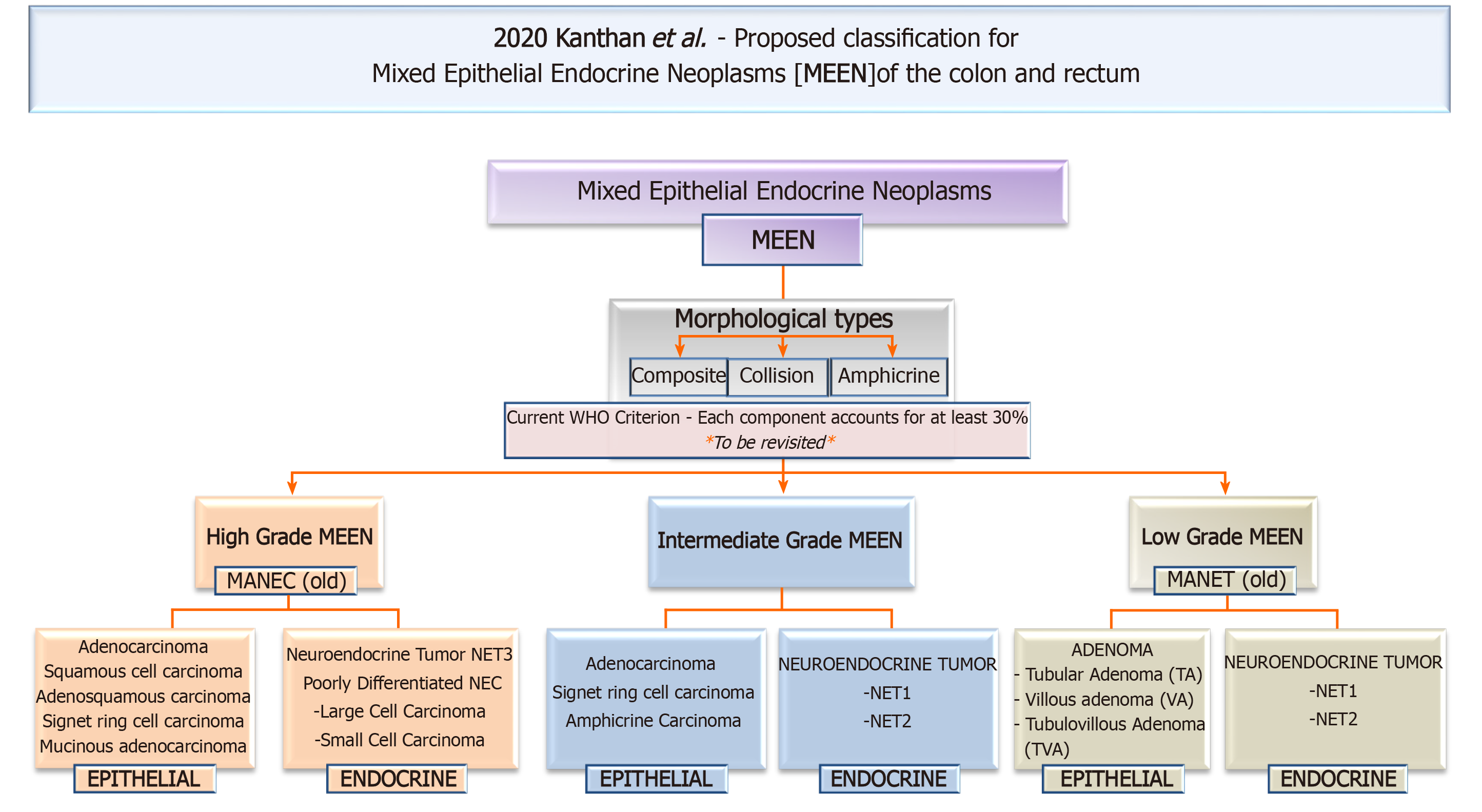Copyright
©The Author(s) 2020.
World J Gastroenterol. Sep 14, 2020; 26(34): 5181-5206
Published online Sep 14, 2020. doi: 10.3748/wjg.v26.i34.5181
Published online Sep 14, 2020. doi: 10.3748/wjg.v26.i34.5181
Figure 1 Summary of article selection for the comprehensive literature review adapted on the principles recommended by the preferred reporting items for systematic reviews and meta-analysis report[22].
n = number of studies.
Figure 2 This flow chart summarizes the histological timeline for the evolution of mixed neoplasms of the colon and rectum including the various terminologies adopted since its initial recognition by Cordier[13] in 1924 to its current status in 2019 and the current new terminology proposed in 2020 (Kanthan et al) as detailed in Figure 3.
WHO: World Health Organization; NET1: Neuroendocrine tumor 1; NET2: Neuroendocrine tumor 2; NET3: Neuroendocrine tumor 3; NEC: Neuroendocrine carcinoma; MiNEN: Mixed neuroendocrine-non-neuroendocrine neoplasms; MANEC: Mixed adeno-neuroendocrine carcinomas; MEEC: Mixed exocrine-endocrine cancer; MEEN: mixed epithelial endocrine neoplasms.
Figure 3 This flow chart in 2020 proposes a new innovative simple all-encompassing clinically relevant classification with accurate terminology for these neoplasms as mixed epithelial endocrine neoplasms of the colon and rectum.
MEEN: Mixed epithelial endocrine neoplasms; MEEC: Mixed exocrine-endocrine cancer; MANEC: Mixed adeno-neuroendocrine carcinomas. MANET: Mixed adenoma neuroendocrine tumor; NET 1: Neuroendocrine tumor grade1; NET2: Neuroendocrine tumor grade2; NET3: Neuroendocrine tumor grade3; NEC: Neuroendocrine carcinoma.
- Citation: Kanthan R, Tharmaradinam S, Asif T, Ahmed S, Kanthan SC. Mixed epithelial endocrine neoplasms of the colon and rectum – An evolution over time: A systematic review. World J Gastroenterol 2020; 26(34): 5181-5206
- URL: https://www.wjgnet.com/1007-9327/full/v26/i34/5181.htm
- DOI: https://dx.doi.org/10.3748/wjg.v26.i34.5181















